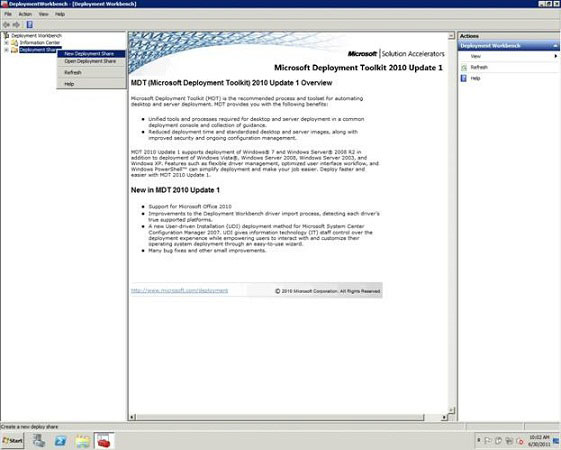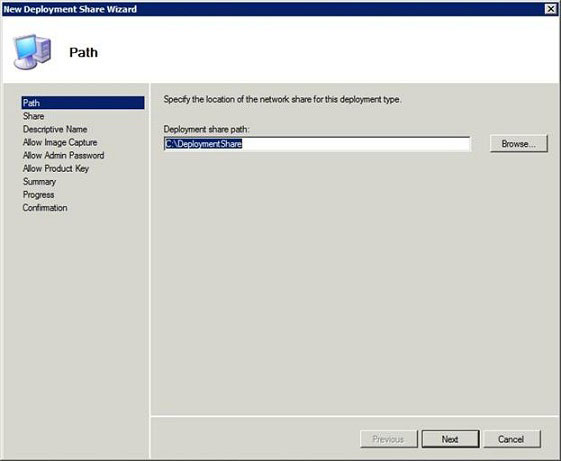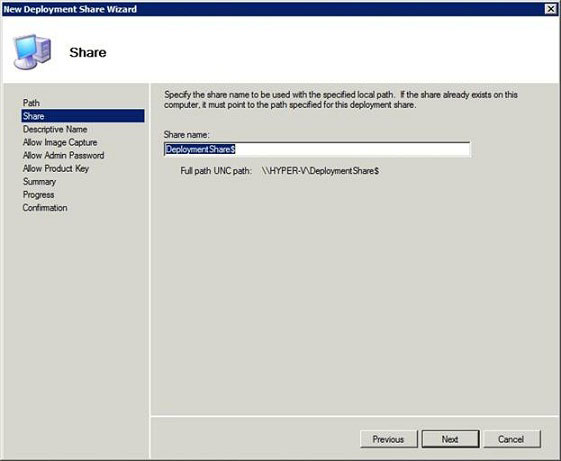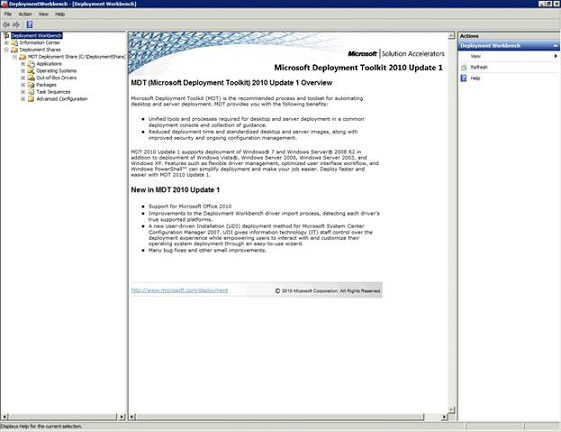Create private cloud with Hyper-V (Part 1)
TipsMake.com - Cloud computing has emerged in the last few years. The cloud provides infrastructure services (IaaS) that offer unprecedented flexibility as they enable the provision and deployment of new virtual machines quickly.
>>> Create private cloud with Hyper-V (Part 2)
Although it is not possible to deny the benefits that IaaS clouds can bring, it is undesirable for organizations to depend on the Internet to access the cloud servers. They will not be able to access the server if the Internet connection is lost or when the connection is congested. This is what businesses and organizations wonder.
With the solution to build a private cloud, businesses will not only benefit from the flexibility of the IaaS cloud, but also avoid the risk of losing server access due to Internet connection failure.
The series will guide users how to build their own cloud to quickly deploy different types of network servers. The cloud will have a self-service portal that allows administrators (or authorized users) to use a simple web interface to select the resources they want to provide and assign functions for server to deploy. For example, with the click of a button, an administrator can execute a new domain controller or a new Exchange Server.
Active Directory
The private cloud solution introduced in this article requires an Active Directory infrastructure. Due to the way cloud is built, you need domain controllers. In some situations, the private cloud may not be accessible after performing virtualization on domain controllers. To avoid this, it is recommended to place at least one domain controller outside of the virtualized environment.
Microsoft Deployment Toolkit
The first step to building your own cloud is to install Microsoft's Deployment Toolkit 2010. Microsoft Deployment Toolkit (MDT) is a free tool that can be downloaded here.
Here we will install the Deployment Toolkit on a physical server that has access to other servers forming the cloud. MDT is not a highly required application so we do not have to use a program-specific server. The server used will serve as a repository for executable image files. This requires the use of a server with large storage space for image files to create. And these image files must be accessible via network sharing.
MDT installation
Windows MDT is only 15MB in size. After the download is complete, run the executable file to display the installation window. In this article, we will use the Update 1 (5.1.1642.01) update of the toolkit.
Click Next to bypass the welcome screen. The program will ask if you accept the terms of the agreement. If accepted, click Next to continue. The program continues to ask what components users want to install. Choose to install all components (this is the default option) and click Next to install.
Create a public folder
Now Windows Deployment Toolkit has been installed. We will need to create a public folder (deployment share). To do this, open the Deployment Workbench, right-click on the Deployment Shares folder and select New Deployment Share from the context menu, as shown below.

While creating a public folder, an error message may appear asking to update to a newer Windows Automated Installation Kit. Download the Automated installation Kit. Remember that before installing this new version, users must install SP1 for Windows Server 2008 R2. Download the service package here.
When you create a new public folder, Windows will launch the installation window. On the first screen, enter the path for the public folder, as shown below. This is the link to save all executable image files. Therefore, choose a location carefully and have a large storage space.

Click Next then name the public folder that will be created. The default name is DeploymentShare $ . Last name symbol to hide the folder.

After clicking Next , enter a description for the folder to be created. For the purposes of the article, I will use the default description of MDT Deployment Share .
Click Next and the installation window will ask users if they want to save the image file. Activate the option and click Next .
A screen appears asking if you want to grant an administrator password to users. Temporarily don't tick this option because we really don't want users to know the local admin password.
After clicking Next , the installation window will ask if you want Windows to request product key from the user. Ignore this option.
When you click Next , you will see a summary of the configuration options we have selected. Check to confirm the options. If all is well, click Next to create a public folder. When the process is complete, click Finish .

Conclude
So we have created the public folder. Now it's time to add some operating systems to the directory.
You should read it
- Create private cloud with Hyper-V (Part 3)
- Learn about Public Cloud, Private Cloud and Hybrid Cloud
- Multicloud - a new step in cloud computing technology
- Cloud computing can develop in a relatively different direction in the next few years
- Create private cloud with Hyper-V (Part 5)
- The NSA identifies 4 'critical' security vulnerabilities of cloud systems
- Share experience in selecting and using cloud services effectively
- Learn to use lesson computer 14 - Learn about cloud storage
May be interested
- Learn about Public Cloud, Private Cloud and Hybrid Cloud
 there are many different ways to deploy and exploit cloud computing resources.
there are many different ways to deploy and exploit cloud computing resources. - Instructions for using Hyper-V on Windows 8 (Part 1)
 one of the new features on windows that is most noticeable is the hyper-v virtualization program to meet users' need to create windows virtual machines. the article will guide readers to activate and use the program on windows 8.
one of the new features on windows that is most noticeable is the hyper-v virtualization program to meet users' need to create windows virtual machines. the article will guide readers to activate and use the program on windows 8. - How to create a shortcut Hyper-V Manager in Windows 10
 hyper-v, which allows running virtualized computing systems on physical servers. this tutorial will show you how to create a hyper-v manager shortcut in windows 10.
hyper-v, which allows running virtualized computing systems on physical servers. this tutorial will show you how to create a hyper-v manager shortcut in windows 10. - Virtual network for Hyper-V - Part 2
 in part 2 of this series, i will continue the discussion by talking about virtual networking on hyper-v by studying the communication between partitions.
in part 2 of this series, i will continue the discussion by talking about virtual networking on hyper-v by studying the communication between partitions. - How to enable and use Hyper-V on Windows 10
 windows 10 is equipped with hyper-v to help users create virtual machines directly without using third-party software. let's see how to activate and use hyper-v on windows 10 through the simple steps below.
windows 10 is equipped with hyper-v to help users create virtual machines directly without using third-party software. let's see how to activate and use hyper-v on windows 10 through the simple steps below. - How to rename Hyper-V virtual machines using PowerShell and Hyper-V Manager
 sometimes when you create a hyper-v virtual machine, you must give it a name and sometimes the naming is incorrect or simply you no longer want to use that name. this article will provide three methods to rename a hyper-v virtual machine to your liking.
sometimes when you create a hyper-v virtual machine, you must give it a name and sometimes the naming is incorrect or simply you no longer want to use that name. this article will provide three methods to rename a hyper-v virtual machine to your liking. - Multicloud - a new step in cloud computing technology
 you may think that 'multicloud' and 'hybrid coud' are the same, but no, they are different stages in the development of cloud computing.
you may think that 'multicloud' and 'hybrid coud' are the same, but no, they are different stages in the development of cloud computing. - Create virtual machines in Hyper-V on Windows Server 2008
 after hyper-v is installed, the first thing to do here is to create a virtual machine - virtual machine. in the following article, we will introduce you to some basic steps to do this, with the general implementation process almost just clicking next> next> finish.
after hyper-v is installed, the first thing to do here is to create a virtual machine - virtual machine. in the following article, we will introduce you to some basic steps to do this, with the general implementation process almost just clicking next> next> finish. - How to create and use Hyper-V checkpoints in Windows 10
 checkpoint is a powerful feature of hyper-v, making it easy to undo all changes on a virtual machine.
checkpoint is a powerful feature of hyper-v, making it easy to undo all changes on a virtual machine. - Instructions for installing Hyper-V
 to install hyper-v, open the server manager tool and click the add roles link. next, in the select server roles dialog box, click on the hyper-v role. at this point, follow the step-by-step instructions to install hyper-v on the server.
to install hyper-v, open the server manager tool and click the add roles link. next, in the select server roles dialog box, click on the hyper-v role. at this point, follow the step-by-step instructions to install hyper-v on the server.










 Introduction to UAG DirectAccess - Part 3: NAT64 / DNS64
Introduction to UAG DirectAccess - Part 3: NAT64 / DNS64 Install and configure Hyper-V Tools for remote management
Install and configure Hyper-V Tools for remote management Microsoft System Center Service Manager - Part 2: Installation
Microsoft System Center Service Manager - Part 2: Installation Microsoft System Center Service Manager - Part 3: Initial configuration
Microsoft System Center Service Manager - Part 3: Initial configuration Back up virtual machines with Windows Server 2008 R2 and Hyper-V
Back up virtual machines with Windows Server 2008 R2 and Hyper-V Collect the Process ID information or GUID of Hyper-V Virtual Machine
Collect the Process ID information or GUID of Hyper-V Virtual Machine